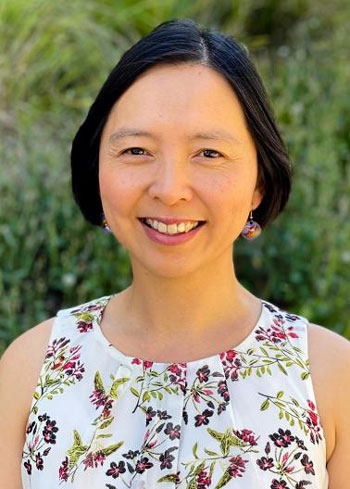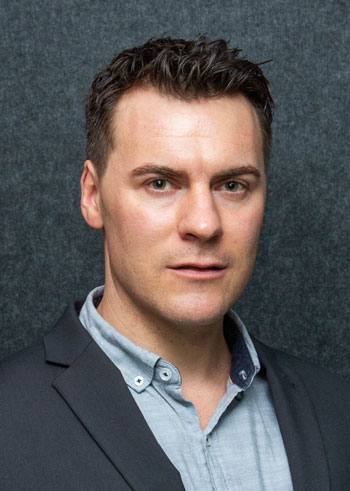
(she/her), Ngunnawal/Ngambri Country
LinkedIn: linkedin.com/in/hollyvuong
Twitter: @coughitup1
My career goal was to become an academic professor. However, after two postdoctoral positions, moving between the USA and Australia, and working across a range of professional roles, I found knowledge brokering as a new career path where I could play a role in bridging the gap between research and policy. Using a term that a friend and colleague coined, I’m a ‘pracademic’ – I get to use my skills from academia and apply it to the practice of evidence-based policy and other governmental projects.
My journey included volunteering and interning at science advocacy organisations, developing STEM programs for students, knowledge engagement, and project management. At the time of writing [May 2022], I am an Office of the Chief Scientist Science Policy Fellow at the Department of Infrastructure, Transport, Regional Development and Communications. By the start of June, I will be taking on the role of a senior government engagement advisor at CSIRO.
The Australian election provided a great opportunity to join the department’s taskforce to support the coordination of incoming government briefs for incoming ministers. These documents provide new ministers information about their portfolio and key policies associated with their roles.
While no days were typical during this caretaker period, being part of this team provided me insights into how the strategy area supports the department as a whole, the interactions across levels in the department, and the importance of communication among individuals and teams to deliver a high-end product with strict deadlines.
As a graduate student, I hadn’t considered careers outside of academia. As I matured, I learned to be more open to various career opportunities. If I could give my younger self and ECRs some advice, it would be to take advantage of opportunities that are outside of your career goal. You never know what new passions you might encounter and how it might lead to a fulfilling career.
To find out about opportunities and potential careers, I chat with my managers, colleagues, friends and partner to obtain a range of perspectives. These conversations allow me to re-evaluate personal and professional goals regularly, and to consider the short (1–2 years) and medium (3–5 years) goals of where and what I want to be.
Following my undergraduate studies, I worked for a US federal agency for a year and swore to not work for government again. I am now finishing my year as a science policy fellow with the Australian Government, and I am pleasantly surprised at my willingness to stay in government to gain more experience. Another positive surprise with working in the Australian Public Service is learning about the wide array of projects and policies that departments work on that I hadn’t known about as a member of the general public. A bonus was working with smart and dedicated folks in the team.

(he/him), Ngunnawal/Ngambri Country
Twitter: @photonbased
After completing my PhD at ANU in Canberra, I was offered a three-year postdoc position in Finland to work on photosynthetic processes and regulation. Following this, I was privileged to receive an offer from Professor Graham Farquhar to return to ANU and work in his lab. Unfortunately, the month I started was the same month Covid locked us out of the lab. This disruption and the associated challenges in Australia’s university sector prompted me to look for opportunities outside academia.
The Office of Chief Scientist accepted me into its Science Policy Fellowship program about 12 months ago. The Fellowship recognises academics’ transferrable skills and places them across Australia’s public service. I spent six initial months developing environmental policy options for Australia’s offshore resources sector. I currently work on Australia’s low-emissions technology policy, which includes providing support to the previous Chief Scientist and instigator of the Fellowship program, Dr Alan FinkeI. I have found policy work both mentally stimulating and a pathway to continue making positive contributions to society.
Although I miss ‘quickly’ checking something in the lab and losing six hours, days in my current role race by. I am surrounded by passionate, intelligent people and confronted by multiple simultaneous tasks with tight deadlines. Low-emissions technology and Australia’s energy transformation are broad, complex issues.
I have been leading our team’s work on hydrogen and derivatives. This provides opportunities to engage across a diversity of industries, academia, and other government stakeholders, and to work in the international space. I have also developed and now deliver a program bringing academics to meet policy makers working on similar problems. The program targets EMCRs, providing opportunities to develop working relationships with their policy-making counterparts and to demonstrate their impact.
I was initially shocked by the immediacy of work I have been involved with in the public service. Issues blowing up in the news are often those I have been working feverishly to understand and provide advice on. This is exciting and a big change from academia where the first question from the general public was often – “oh you study photosynthesis, don’t we already know how that works?”
Working in the public service has negative connotations for some people. After moving from Melbourne to Canberra and getting know so many interesting and intelligent public servants I learned to appreciate the important role it plays. Of course, I would recommend entering the public service by applying for the 2023 Science Policy Fellowship. It provides institutional support, a cohort, a mentor, an opportunity for a rotation, membership of the Fellowship alumni network; and frankly, being a Fellow has opened doors.
I have designed my wedding ring to represent the photosynthetic ‘Z-Scheme’, a diagrammatic representation of oxidation/reduction potentials of molecules involved in the light reactions. The energy potential of the proton gradient across the thylakoid membrane is also represented in the ring’s twisted motif.
© 2025 Australian Academy of Science